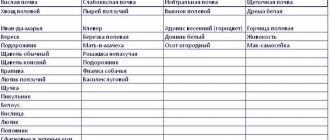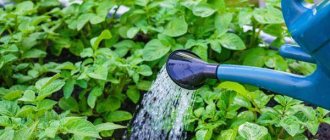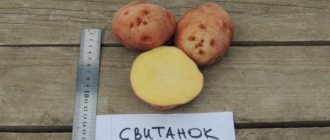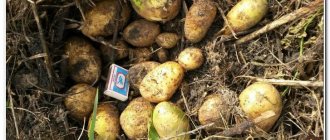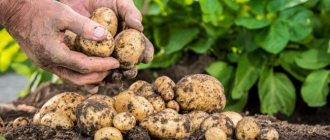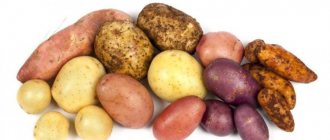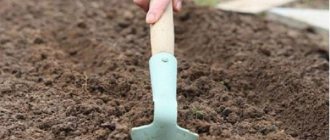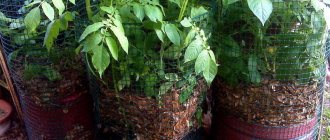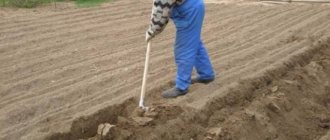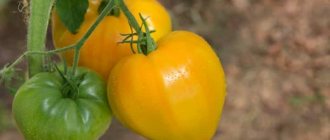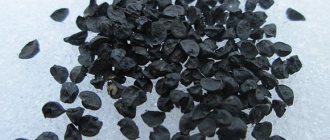The time to harvest potatoes depends on various factors. The selected variety, time of planting, and weather conditions are taken into account. When to dig potatoes? This is a question many farmers ask. There is no clear answer to this.
Experienced gardeners know that harvest depends on planting time. If potatoes were planted at the end of April, the harvest must be harvested before August. But according to statistics, the best time for landing is May. Therefore, potatoes are usually harvested in early September. Although the harvest begins in mid-August.
The type of vegetable also affects the harvest time. When and how to dig early-ripening potatoes? They are usually harvested 4-6 weeks earlier than the others.
When answering the question of when to dig potatoes, you should also consider how exactly you plan to use the vegetable. This means whether it will be immediately consumed as food or whether it will be left for winter storage.
Young potatoes are eaten, and for this purpose they are dug at the end of July. If you plan to store it in the winter, then it is better to delay the collection a little. In this case, the peel will have time to become dense, and the potatoes will be stored better.
Is it possible to determine maturation by external signs?
Potatoes are a fairly popular crop in gardeners' garden beds. It is grown in huge quantities. It is very important not to miss the time of digging and harvest on time. There are external signs that help you understand whether it is time to harvest.
Here are the main signs of potato ripening:
- The bushes begin to dry out and turn yellow instead of green.
- The skin of the tuber becomes dense, thick, and does not peel off, like a young one.
- The tubers contain the required amount of starch, which will allow the vegetable to be perfectly stored during the winter. You can find out by dropping a drop of iodine on the cut. If there is enough starch, the flesh turns purple.
- When digging, the tubers are easily separated from the root structures.
Signs that the crop is ready for harvest
Experienced gardeners know that they can figure out when it’s time to harvest with a certain accuracy by looking at the appearance of the plants. If the tops droop, begin to turn yellow at the bottom, and then wither and dry, the tubers in the ground are already ripe. To be sure, you can dig up several bushes and check the quality of the product. Mature potatoes should have a thick, strong skin that can only be cut with a knife.
In some modern potato varieties, the tops remain green even after the tubers ripen. When growing them, you need to know this feature in advance and check the readiness of the crop for harvesting, focusing on the deadlines determined for them by the breeders. If potatoes set seeds after flowering, you can check them for maturity. Usually both the “top” and “bottom” of the bush ripen at the same time.
Do you need to harvest your crops on time?
How to quickly dig up potatoes? Much depends on the correct harvest time.
Why is it so important to harvest on time? If you harvest potatoes before a certain date, then the skin of such tubers is easily peeled off, and they will not be preserved for a long time.
For long-term storage, it is important that the peel hardens. But you shouldn’t keep the vegetable in the ground either. There are several reasons for this:
- The vegetable can be damaged by insects or pathologies.
- The tubers dry out and lose weight.
- They can rot from waterlogging.
- Vegetables may freeze when cold weather sets in.
How to choose the date for harvesting potatoes
Starting from the flowering period, young potatoes are selectively dug for food. Everyone knows that such tubers have a thin skin that is easily peeled, and the root vegetable itself is watery and contains little starch (no more than 10%). These are the main external signs of unripe root crops.
A fully ripened tuber has a dense skin, sometimes similar to a cork. The starch content increases to 13-16%, depending on the variety.
Harvesting time depends on many factors, primarily on the potato variety.
| Varieties | Growing season, days |
| Early | 70 |
| Late | 90-100 |
The tubers are planted at the same time; the harvesting times for early and late varieties of root crops differ by 4-6 weeks.
Early potatoes for food are selected from the garden, starting from the appearance of flowers, until the end of July. Some tubers of early varieties are dug up for winter storage in late July - early August.
Objective and subjective factors cause confusion in the exact timing of ripening:
- climatic features of the region;
- vagaries of weather during the growing season;
- soil composition of a particular bed;
- negligent attitude towards compliance with the rules of agricultural technology.
| Soil fertility | On poor soils, ripening occurs faster, and, conversely, on fertile soil the growing season is prolonged - tubers can grow until late autumn. |
| Amount of moisture | Lack of moisture during the summer accelerates the ripening process. |
| Feeding and fertilizers | Excessive doses of fertilizers (especially nitrogen) not only prolongs the growing season, but also contributes to the accumulation of nitrates. |
There is no single deadline for harvesting root crops - even within the Middle Zone, potatoes are dug throughout the second half of August, until mid-September.
Tuber harvesting must be completed before the cold weather, when the soil temperature drops to 6-8°C. Rainy, cold weather does not contribute to the keeping quality of tubers.
According to the old tradition, potatoes and all root vegetables were harvested on Kupriyan day, August 31 (September 13, old style): the departure of the cranes symbolized the end of summer.
How to properly harvest?
How to quickly dig up potatoes is not an idle question. There are several ways to harvest vegetables. Gardening tools are often used, including a pitchfork and a shovel. Special agricultural technology is also popular.
You can dig with your hands, but such a process is too labor-intensive. And for gardeners in old age, their health does not allow them to stop at this method. If the area is large, it is wiser to use a walk-behind tractor.
Types of potato diggers
All potato diggers work on the same principle, but can be handmade or purchased.
Factory
Factory-type potato diggers can be of the following types:
- Lancet diggers - used in conjunction with a walk-behind tractor. Externally they look like shovels with welded rods. During the harvesting process, the soil rises and sifts through the rods, leaving the tubers on the surface.
- Screen-type digger - the action of such a device is achieved thanks to a vibrating table, into which the soil and potatoes fall. The soil is sifted, but the tubers remain. Suitable for processing large areas.
- Conveyor potato digger - the operating principle of this device is to lift the soil along with the potatoes onto the table where the conveyor belt is located. The soil is sifted and the potatoes are placed in a row.
The choice of potato digger largely depends on the size of the plot, as well as on the personal preferences of the gardener.
Homemade
Using a homemade device allows you not only to save money, but also to individually select the characteristics of the digger. To make your own potato digger, you must perform the following steps:
- weld a rectangle from a square pipe, this device will act as a frame;
- using a section of square pipe half the length of the frame, weld the base for the traction structure;
- on the other side of the frame, an axle for the wheels is welded;
- using sheets of metal, you need to make a ralo and weld it to the bottom of the frame;
- a pitched board is welded at the same level as the rahl; for this, 10 rods of the same length are welded to a metal plate and fixed to the frame of the digger.
After carrying out all the procedures, you get a simple do-it-yourself potato digger. Each gardener can independently upgrade the device according to personal preferences.
Important. In order for the rawl to sink into the soil to the required depth, the metal must be ground off on one side
Application of a walk-behind tractor
Agricultural machinery can be used if all tops are cut off throughout the entire area. You should wait 2-3 days and you can start harvesting.
The equipment is prepared in advance. Check the rotation elements and lubricate them with oil if necessary. Parts that directly loosen the soil are cleaned of dirt. Dull blades sharpen.
When using a walk-behind tractor, you should follow the following recommendations:
- The bushes should stand in orderly rows, this is taken into account when planting. Then you won’t have to make awkward maneuvers around the site.
- The intervals between the rows are 70-80 cm, so the wheels of the walk-behind tractor will not damage the planting.
- When harvesting, it is worth using special attachments to adjust the depth.
- The machine is pre-set to make plowing easy.
- To ensure uniform movement of the walk-behind tractor across the site, digging is done through the bed.
If you are worried about how to dig up potatoes correctly and not get tired, a walk-behind tractor will definitely help in this difficult process.
What to dig with
Choose a sunny, warm day to harvest. I do not recommend starting work early in the morning. At the beginning of the day, the contrast between the cold night air and the warm ground is still strong, which will provoke the formation of condensation on the surface of the root crops.
Shovel
The traditional way to harvest potatoes is to arm yourself with a shovel and dig up each bush one by one. To make your task easier, choose a tool based on the type of soil on the site. For light sandy soil, use a bayonet shovel with a rounded or rectangular blade. For heavy soil, a pointed blade is better.
The disadvantage of this method is the frequent cutting of tubers.
With a pitchfork
Many gardeners find a pitchfork a more convenient tool for digging soil. They are easier to operate, and the potato nest can be easily pulled out of the soil. But if you pierce a potato with a pitchfork, it will not be stored - it will immediately begin to rot.
A classic tool with four teeth is suitable for the job, but it is better to use special forks for digging potatoes.
Using a fork is a dangerous method, so put on tarpaulin boots before work.
Motoblock
If you have a large plot, digging potatoes with a pitchfork or shovel will be long and difficult. In this case, it is more convenient to use a walk-behind tractor or cultivator. This will significantly speed up the harvesting process. The equipment covers an area of five acres in five minutes, and it will take another hour and a half to collect the dug up tubers by hand.
The walk-behind tractor must be set up correctly, otherwise the digger will spoil the root crops. Adjustment to the required digging depth is carried out using a trial method. If everything is done correctly, there will be fewer cut tubers than when using a regular shovel.
Watch a video on how to set up a walk-behind plow.
I talk more about the use of special equipment in the article “How to dig potatoes with a walk-behind tractor.”
With your own hands or with a potato digger?
Of course, you won’t be able to dig up potatoes quickly and easily with your hands. In this case, a shovel or “digger” is used. This method is relevant if the land area is no more than 5 acres. If the area is larger, the technique should be used.
The manual method of harvesting potatoes is as follows:
- One gardener drives a shovel under a tuber and lifts it up.
- The second one collects vegetables, following the first one.
Using the manual method, it is convenient to immediately sort the crop. You can let the tubers dry in the beds.
Sometimes gardeners use a hand potato digger. This is a tool that is easy to assemble and disassemble. The potato digger has a fork that works automatically. The tool is placed next to the bush, the teeth go into the ground, and the button is pressed with the foot. The teeth rise with the tubers, and the soil falls down. Such a digger does not damage the tubers, since the digging is done from below and on the sides.
Before you start collecting by hand, prepare a storage area. When collecting vegetables, you should make sure that the tubers do not fall or get damaged.
So, we looked at how to quickly dig up potatoes by hand, without using machinery.
When to weed potatoes before digging
Potatoes, like all other plantings, must be weeded in a timely manner to reduce the risk of diseases carried by pests.
In small areas, weeding is done manually; on large-scale plantations, mechanical or chemical means can be used.
As a rule, you need to remove weeds from potato beds at least twice a season:
- The first weeding is carried out when the sprouts reach 4 cm in length. This occurs approximately 3-4 weeks after disembarkation.
- It is recommended to remove weeds a second time after the potato stems rise 20-30 cm from the ground.
Typically, weeding a potato bed is combined with the hilling procedure. But if unsprouted tubers were planted in the ground, then weeds can clog the bed before the first shoots appear on it. In this case, you need to manually free the plantings from weeds.
The second weeding should be carried out before the first flowers appear on the bushes. Once the potatoes bloom, care is reduced to a minimum.
When choosing a tool for weeding, you need to focus on the size of the area, your own strengths and capabilities.
All garden tools used can be divided into several groups:
- The simplest hand tool, which includes a hoe, chopper, flat cutter, etc.
- Motoblock.
- Cultivator.
How to prepare the land for plowing?
When growing potatoes, when and how to dig are not the only issues. Preparing the land before planting is no less important and will also affect the characteristics of tuber collection.
When planting, the soil is saturated with oxygen using deep cultivation. This will allow root structures and fruits to form better.
There are different ways to prepare the soil for planting:
- Deep processing with cultivators and flat cutters.
- Plowing with a plow.
- Processing with deepening.
Which is better - a shovel, a pitchfork or a walk-behind tractor?
Many gardeners traditionally use a shovel, but it cuts some of the tubers when digging. In addition, it is difficult to use on compacted soil, it is difficult to penetrate into it. For such soil, you need to buy a shovel with a sharpened blade.
It is easier to dig with a pitchfork and damages fewer tubers. On the other hand, if potatoes cut with a shovel can still sit for some time, then those pierced with a pitchfork will very soon spoil.
A walk-behind tractor with a potato digger installed on it allows you to quickly remove potatoes, but before using it, you must definitely get rid of the tops.
Spring training
If in the fall the main question is how to quickly dig up potatoes, then in the spring you should think about proper pre-planting preparation of the land.
When planting in spring, you should understand what soil is best suited for the plant. Clay soils are not suitable. You should also not plant where water constantly accumulates. These are various lowlands.
The most favorable soil for growing crops is loose, sandy. It’s good if the soil is chernozem and peaty. If the soil is acidic, ash, sand and manure or compost are mixed into it before planting.
The method of processing is determined by the composition of the soil and the region. Plowing to a depth of 30 cm is possible almost everywhere. If you dig deeper, the soil can become very oxidized.
Recommendations for selection
The choice of a walk-behind tractor and a digger for it depend on the needs of the farmer. The following factors are taken into account:
- size of the plot - the larger the area, the greater the power of the machine’s motor;
- soil structure - for heavy soils with a dense structure, lightweight structures are not suitable;
- type of fuel - gasoline or diesel.
Find out when is the best time to dig potatoes for storage.
- power - diesel vehicles have more power, high traction force, and are effective on heavy soils. Gasoline ones are more maneuverable, an excellent option for a small area with light soil. A diesel engine is able to work longer because it has two types of cooling (water and air), a gasoline engine is only air-cooled, it needs breaks;
- efficiency - costs for diesel are significantly lower than for gasoline, given that the fuel for the latter must have an octane rating of at least “92”;
- ease of use - gasoline engines produce less noise, they can operate at low temperatures, and vibration during operation is practically not felt. Diesel cars are noisy, they require additional oil, and their heavy weight creates strong vibration during operation.
- for low-power or average-strength units, simple designs are selected - fan-shaped or lancet. The model is inexpensive, all its parts are stationary, without moving parts;
- For heavy machines, a screen digger is more suitable. Its advantage is that the tubers are cleared of adhering soil even if the soil is wet.
Did you know? In 2010, at the National Gardening Show in England, a record was registered: farmer Peter Glazebrook presented a home-grown potato tuber weighing 3.8 kg.
Purchasing a walk-behind tractor will make it much easier for a summer resident or farmer to work on the land. A competent approach to choosing a device will save money and expand the list of work performed.
Pre-planting soil preparation
To get a good harvest, you need to saturate the soil with oxygen. Loosening will help in this direction. You need to do it on a dry day. The soil is dug up to 15 cm.
Before planting a vegetable, a number of activities are carried out:
- the soil is dug up to 15-20 cm to saturate it with oxygen and destroy pests;
- they enrich the soil with preparations against late blight;
- add minerals and organic matter;
- a year before planting, green manure plants are grown in the garden bed.
Advantages and disadvantages of digging with a walk-behind tractor
Caring for the site manually takes a lot of time and physical effort, so summer residents and farmers resort to the help of machines.
- The advantages of the machines are obvious:
- simple design - you can understand the machine settings without having technical skills;
- saving time - harvesting using a walk-behind tractor will take several times less time than digging by hand;
- saving physical effort - mechanized labor requires less physical effort from the gardener;
- high-quality harvesting - skillful handling and correct adjustment of the structure will avoid damage to the tubers, which is not always possible when working with a shovel;
- additional functions - purchasing various attachments, in addition to a digger, will allow you not only to harvest crops, but also to carry out other land work (ploughing, harrowing, sowing).
Did you know? In 1995, potato bushes were successfully grown in outer space. The sprouts were taken into orbit by astronauts on the Columbia shuttle.
Preparing potatoes for storage
The potato crop is harvested on a clear day, when the temperature is 10-15 degrees Celsius. To prevent condensation from forming on the tubers when the temperature contrasts (the soil is warm and the air is cold), you should not start in the morning.
Before harvesting for storage, tubers intended for food are dried for at least 3 hours under the sun in a flat, clean place and sorted. The heated potatoes are cooled under a canopy, and the next day they are put into the cellar. Some people scatter the dug-up crop for 1.5 weeks in a dark, ventilated place, and then take it to the cellar.
Tubers intended for seeds are kept in the sun for 2 days until they turn slightly green, so bitterness appears in the pulp, which pests do not like. Then, before sending for storage, they are also cooled.
Determining potato maturity by date
The true condition of the crop cannot always be judged by external signs. Often weather conditions make their own adjustments. In the Moscow region, the weather is often rainy, and potato bushes remain green for a long time. In the south of Russia, summers are hot, and the tops begin to turn yellow earlier, immediately after they have time to bloom. In such circumstances, you need to rely on calendar dates to understand when you can dig up potatoes for food or storage. To do this, remember the date during boarding.
Sprouted tubers are lowered into the soil after it has warmed up. This usually happens in April or May. After planting, the first shoots appear within 15-20 days. The time for flowering comes in another 2-3 weeks. Typically, potatoes take a little over a month to grow from planting to becoming new. Mature tubers can be harvested no earlier than 60 days after planting.
Potato sorting
Sorting for potatoes is an important event that allows good, high-quality fruits to be stored for a long time in a cellar or basement. Some people immediately select good, whole, not rotten fruits from the spoiled ones in the garden. Some carry out the sorting procedure under a roof, in a garage or shed. It is advisable to sort each batch that is collected from the garden.
Potatoes are sorted not only by quality and size, but also by color. You should not put large and small fruits in bags at the same time. Small potatoes are best left for livestock feed or as a last resort for making moonshine. The average one is used by gardeners as a seed fund. Large potatoes are eaten immediately.
Buying tips
Garden stores offer a variety of attachments. Diggers are no exception. The success of harvesting, as well as long-term storage of tubers, depends on the quality of the latter. When going to choose a potato digger, the gardener must know the type of walk-behind tractor. For example, the “Agro” and “Bison” models are combined with light cultivators. Others may simply not be suitable due to the inability to go deep to the required level.
The following potato diggers are combined with heavier and more powerful walk-behind tractors:
- KVM-3 - the equipment can go 25 cm deep, and the ability to install additional knives makes it easier to collect tubers in hardened soil;
- KVM-1 – used in combination with mobile devices. This model has special slots for installing cutting tools.
For your information! When choosing a potato digger, you should take into account the difference between a multifunctional walk-behind tractor and a cultivator designed more for loosening. To use the latter for digging tubers, the attachment must act as a good weighting agent.
Influence of variety on ripening time
Before planting potatoes, it is necessary to correctly determine the variety. You need to focus not on the promised amount of harvest, but on the adaptability of the variety to the climate of the growing region and weather conditions in this area.
The division of crop varieties is carried out into the following categories:
- early types make it possible to harvest potatoes 60 days after planting;
- mid-early varieties can begin to dig 70 days after sowing the seed;
- mid-season varieties can be harvested as early as 90 days;
- for mid-late species, 100 days must pass from the moment of planting before they can be dug;
- Harvesting of late-ripening species is carried out after 100 days from the time of planting.
Important!
For regions located in the middle zone, mid-season and mid-early crop varieties are more suitable. They manage to ripen and produce a good harvest. It is unwise to plant early species. In the short growing season, they will not have time to get enough of nutrients in conditions of lack of sun. Also, you should not grow mid-late and late species here. They take a long time to mature. Therefore, in a short summer they may not gain the required maturity.
Digging potatoes with a Neva walk-behind tractor. Basic information
In most cases, walk-behind tractors and walk-behind cultivators are not used over large areas; they will not be able to cope with a large volume of work on heavy soils. This equipment is designed for small and medium-sized farms to work on light and medium soils.
The Neva walk-behind tractor is considered the most popular unit among farmland owners; it is characterized by high technical performance and a long service life.
Neva walk-behind tractors by themselves are not very effective, but with the use of additional equipment they are capable of performing any agricultural work:
- motor cultivators are suitable for summer residents and farmers for cultivating the soil;
- planters in combination with a walk-behind tractor - for planting vegetable plants on plots of land;
- mowers - for mowing grass mass;
- hilling of potatoes is carried out with hillers;
- A potato digger is used for mechanized collection of root crops.
Recently, farmers have been using modern agricultural technology to grow vegetable crops.
Planting potatoes with a Neva walk-behind tractor significantly saves time, allows you to cultivate large areas, and improves the yield due to loosening the soil. In this case, the process is carried out in 2 ways:
- hillers with regulators;
- mounted planters.
The potato planter for the Neva walk-behind tractor is used by owners of large plots of land. It is more efficient: in one pass it makes furrows in the soil, pours tubers out of a special bunker and covers them with soil.
The harvesting process is carried out using a Neva walk-behind tractor with a potato digger. The teeth of the mechanism dig into the ground, push out the root crops and place them on the surface for further manual collection.
There are several models of diggers that can be mounted with the Neva walk-behind tractor:
- Fan.
- Vibrating. Includes such well-known models among farmers as:
- KKM-1;
- model “Vibrating Potato Digger”;
- KVM-3;
- "Poltava woman."
- Conveyor or belt.
These models are considered the most popular and widespread.
Weather: a force we have no control over
If a person has power over accelerating the ripening of the crop, then he is powerless over the weather. Meanwhile, this is a factor that can affect the quality and storage of the crop. It is important to keep the forecast under control and respond accordingly:
- Long periods of rain are expected - it's time to take out the pitchforks and dig up the crops. Excess moisture can cause diseases, rot, and negatively affects storage. Experienced gardeners know how difficult it is to dig up tubers with soil stuck to them.
- The mark on the street thermometer remains at +17°C - these are good conditions for harvesting potatoes. If the temperature threatens to drop to +10°C or lower, and the potatoes have not yet been harvested, the tubers may turn black.
- It's a clear, sunny day outside - a good time to lay out the potatoes to dry. Excess soil will not stick, and stuck soil will be removed without any problems.
- Harvesting time falls in the autumn - do not dig potatoes in the morning. Wait until the air warms up. Having cooled overnight, it is much colder than the soil, which still remembers the summer warmth.
- The forecast says that stable frosts will come soon - which means by this moment your epic with potatoes should be completed. Cold weather can harm not only the tops, but also the tubers remaining in the ground.
Some people mow the tops: is it worth doing?
If harvesting time is approaching, and the tops are still growing, this can happen if planting is late. Cleaning the foliage is of reasonable importance - this will speed up the growth of tubers. Mow the tops and let the potatoes soak for 7 to 10 days. During this time, all biological processes will be completed.
Late blight is a reason to immediately mow and get rid of the tops. There is no need to dig up the tubers. Leave them in the ground for three weeks, during which time the tubers will fully ripen and acquire a strong skin.
You cannot rush or delay the process of harvesting the potato harvest. Both of these actions will lead to a decrease in quality characteristics. Therefore, it is important to find the right answer to the question of whether it is time to dig potatoes.
Harvesting potatoes for storage
Half a month before the scheduled digging date, all the tops are mowed down, removed from the site and burned. This will prevent the appearance and development of late blight and other potato diseases. The upper part of the bushes is cut off at a height of 15 cm from the ground level. Then the remaining parts of the stems will serve as indicators of where to dig to harvest the potatoes.
On the scheduled day the weather should be dry and sunny. Then the extracted root vegetables can be easily dried for several hours in the sun. This is a great way to prepare tubers before storing them. If it rains on the day of digging or it rained the day before, the work becomes much more difficult. The dug up potatoes remain dirty due to the wet soil. It takes several days to dry such tubers. Therefore, it is better not to dig on a damp and cloudy day.
Digging potatoes with a walk-behind tractor
In large areas, the easiest way to dig up potatoes is to use special equipment, for example, a walk-behind tractor. To do this, after switching on, lower the pointed element into the soil. Then they move behind the walk-behind tractor along the strip, carefully holding and guiding it. This mechanized method greatly simplifies harvesting and speeds up work. If two people work, it will take about 20 minutes to clean one hundred square meters. The second person must go behind the walk-behind tractor and collect the tubers brought to the surface.
Despite the ease of operation, mechanical harvesting increases the number of damaged tubers. The least damaged specimens are immediately used for food. Heavily chopped root vegetables are sent to a pit for making compost.
Important!
In order for the walk-behind tractor to move between the rows, even at the time of planting the potatoes, they do not need to be placed too close. The distance should be at least 45 cm. The depth of the root crops is of great importance. Optimally, they should be located at a distance of 20-25 cm from the ground level.
Manual digging
Usually, a bayonet shovel or pitchfork is used to dig potatoes by hand. Moreover, the latter tool is recommended to be used if the soil is viscous and heavy. There is no need to break clods of earth with a shovel so as not to damage the tubers.
The tool is immersed into the soil at an acute angle, retreating 20 cm from the bush. Then the tool is pressed on with the foot and the earthen ball is slightly raised. After this, they grab the bush by the remains of the tops with their hands and remove it from the ground with their hands.
If the tops are very dry or the soil is too dry, it is not possible to remove the plant from the soil along with the root system in this way. Then they dig up the bush from the other side and turn out the earthen lump with tubers.
If the weather is good, the harvested crop is sorted directly on the field. To do this, tubers are dumped according to size onto two large pieces of polyethylene. Large ones are selected for storage, and smaller ones are selected for sowing next year. Damaged or cut copies are sent to a separate bag.
